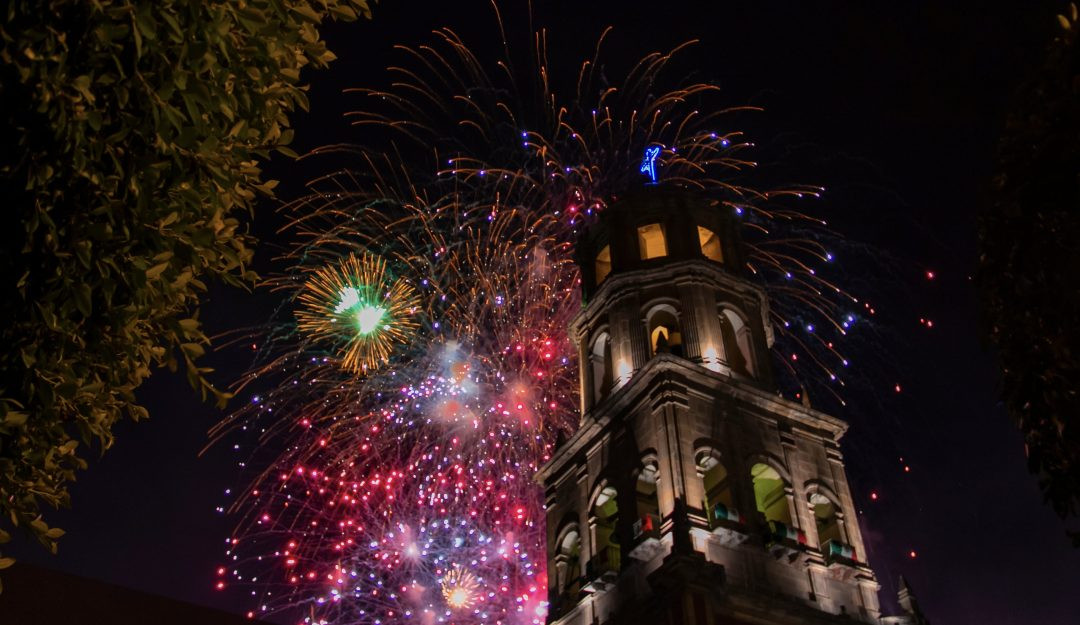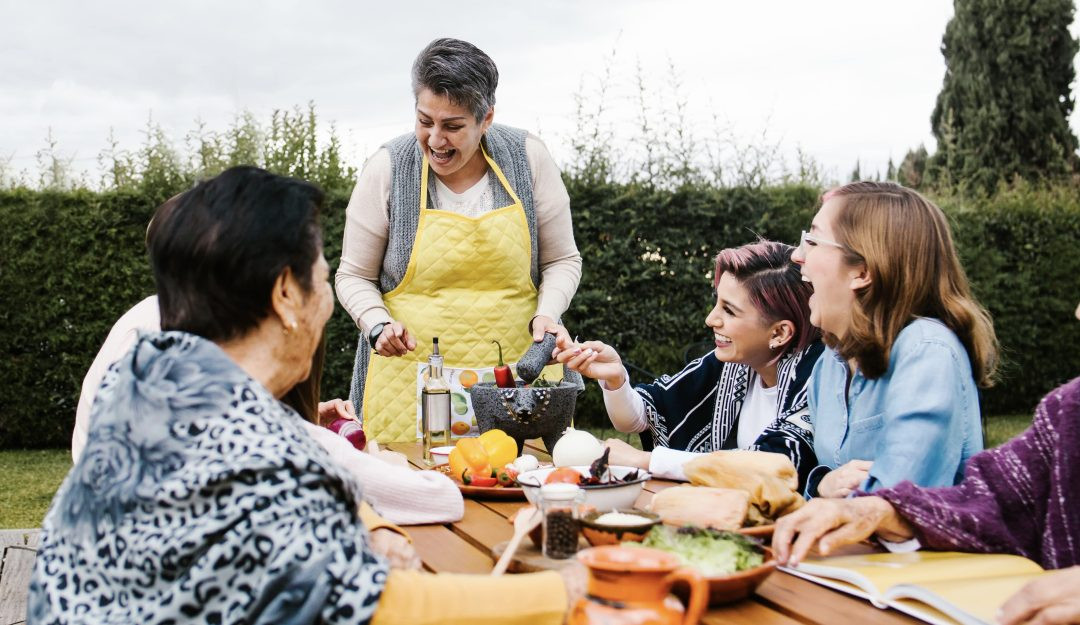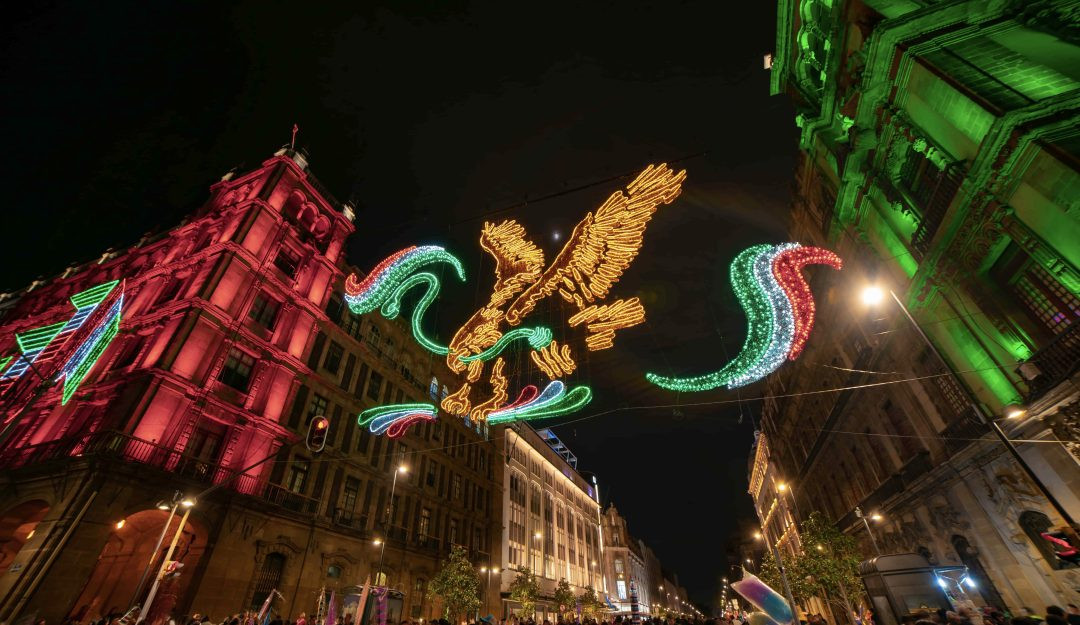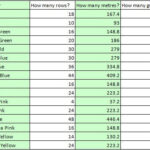When Is The Mexican Independence Day Celebrated? It’s a question many ask, and gaymexico.net is here to provide the answer! Mexican Independence Day is an explosion of pride, freedom, and festivity. We’ll take you through the history, traditions, and vibrant celebrations that make this holiday so special, especially for the LGBTQ+ community and those who love Mexico. Explore the culture, parades, and delicious food of Mexico.
1. Unveiling the Date: When Does Mexico Celebrate Its Independence?
Mexican Independence Day is celebrated every year on September 16th. The festivities begin the night before, on September 15th. You’ll find celebrations in every major town and city, with “El Grito” being the highlight of the evening.
What is “El Grito?”
“El Grito,” meaning “The Cry,” commemorates Father Miguel Hidalgo’s call to arms against Spanish rule in 1810. This event happened in the town of Dolores, Guanajuato. Today, El Grito is reenacted across Mexico.
When Does El Grito Take Place?
El Grito takes place late in the evening on September 15th. It is a central event of the Independence Day celebrations.
How is El Grito Celebrated?
The president, governor, or mayor, depending on the location, leads the ceremony. They stand on a balcony and shout patriotic phrases. These phrases honor the heroes of the independence movement. The leader ends with “¡Viva México!” (Long Live Mexico!). The crowd responds with an enthusiastic “¡Viva México!” After the shouting, bells ring, and the National Anthem is sung, followed by fireworks and festivities that often last until dawn.
Is September 16th a Holiday?
Yes, September 16th is a national holiday in Mexico. Banks and government offices are closed. It is a day for parades and continued celebrations.
What is “El Mes de la Patria?”
The entire month of September is known as “El Mes de la Patria” (The Month of the Homeland). It is a time of national celebration. You’ll see patriotic decorations everywhere. There are cultural events throughout the month.
What are “Fiestas Patrias?”
“Fiestas Patrias” means National Festivities. It is another term for the celebrations in September. Many Latin American countries celebrate their independence from Spain in September.
2. The Spark of Freedom: A Brief History of Mexican Independence
Mexico’s journey to independence was a complex process. It involved political negotiation and armed struggle.
When Did Spain Begin Colonizing Mexico?
Spain began colonizing Mexico in the 16th century. By 1635, the Viceroyalty of New Spain was established. This territory included Mexico and beyond.
What Was the Viceroyalty of New Spain?
The Viceroyalty was a Spanish colony governed by a viceroy. The viceroy represented the Spanish king.
What Led to the Push for Independence?
Several factors contributed to the independence movement:
- Napoleon’s Invasion of Spain (1808): This event created political instability. It raised questions about who was in charge in Mexico.
- Growing Mestizo Population: The mestizo community (Spanish and indigenous heritage) grew. They sought greater rights and opportunities.
- Economic Restrictions: Spanish policies restricted trade and economic development in Mexico.
Who Was Father Miguel Hidalgo?
Father Miguel Hidalgo was a key figure in the independence movement. On September 16, 1810, he initiated the uprising with the “Grito de Dolores.” He rallied people to fight for independence.
What Happened After Hidalgo’s Uprising?
Hidalgo’s army achieved military gains. However, he was eventually captured and executed. The fight for independence continued under new leaders.
Who Was José María Morelos?
José María Morelos was a priest who took over leadership after Hidalgo. He called for an independent nation where all were equal.
How Did Mexico Finally Achieve Independence?
Vicente Guerrero led the independence movement. In 1821, the Plan de Iguala created a military alliance. This alliance brought down Spanish rule. Mexico declared its independence.
What Happened After Independence?
In 1822, Mexico held its first independent congress. After a brief monarchy, Mexico became a republic in 1824.
 sky-filled-with-fireworks-over-mexico-city-on-mexican-independence-day
sky-filled-with-fireworks-over-mexico-city-on-mexican-independence-day
3. Independence Day vs. Cinco de Mayo: Understanding the Difference
Many people confuse Mexican Independence Day with Cinco de Mayo. Here’s a clarification:
Is Cinco de Mayo the Same as Independence Day?
No, Cinco de Mayo is not the same as Mexican Independence Day. Independence Day is a much bigger celebration in Mexico.
What Does Cinco de Mayo Celebrate?
Cinco de Mayo celebrates the Battle of Puebla in 1862. The Mexican army defeated French forces in this battle.
When Did the Battle of Puebla Take Place?
The Battle of Puebla took place on May 5, 1862.
Why Were the French Fighting in Mexico?
After Mexico gained independence, it faced economic challenges. Mexico announced it would suspend debt payments to foreign nations. France, Britain, and Spain sent ships to Veracruz. Only France stayed and tried to establish an empire.
How Did the Battle of Puebla Impact Mexico?
The victory at Puebla boosted morale. It showed resistance against foreign intervention.
How is Cinco de Mayo Celebrated in the US?
Cinco de Mayo is more popular in the United States than in Mexico. It has become a celebration of Mexican-American identity. It is also seen as a festive occasion.
Does Cinco de Mayo Relate to the Mexican Revolution?
No, neither Mexican Independence Day nor Cinco de Mayo is related to the Mexican Revolution. The Mexican Revolution occurred in the early 20th century. It is celebrated on November 20th.
4. Experiencing the Festivities: How Mexico Celebrates Independence Day
Mexico celebrates Independence Day with great enthusiasm. The entire month of September is filled with patriotic spirit.
What is the “Patriotic Feel” in September?
During September, people feel a strong sense of national pride. Homes and businesses are decorated. There are cultural events throughout the month.
What is “Chiles en Nogada?”
“Chiles en nogada” is a traditional dish for Mexican Independence Day. It represents the colors of the Mexican flag: red, green, and white.
What are Common Activities During the Celebrations?
Common activities include:
- El Grito de Dolores: Reenactments of Father Hidalgo’s call to arms.
- Military Parades: Displays of national pride and military strength.
- Fireworks: Spectacular displays of light and color.
- Folkloric Music and Dance: Performances showcasing Mexican culture.
- School Presentations: Children participate in patriotic presentations.
What Happens During El Grito in Mexico City?
In Mexico City, the president leads El Grito from the National Palace. The event is broadcast nationwide.
What Happens During El Grito in Other Cities?
In other cities, the governor or mayor leads the ceremony. They also shout patriotic phrases and ring a bell.
Are There Celebrations Outside of Mexico?
Yes, Mexican ambassadors often lead El Grito in foreign countries.
 mexican-family-gathered-around-the-dinner-table-making-fresh-guacamole
mexican-family-gathered-around-the-dinner-table-making-fresh-guacamole
5. A Culinary Journey: Savoring the Flavors of Independence Day
Food plays a central role in Mexican Independence Day celebrations.
What is the Most Popular Dish for Independence Day?
“Chiles en nogada” is the most popular dish. It is a symbol of national pride.
What are the Ingredients of “Chiles en Nogada?”
This dish consists of:
- Poblano Chili: A mild chili pepper.
- Picadillo:** A filling made with ground meat, fruits, and spices.
- Walnut Cream Sauce: A creamy sauce made from walnuts.
- Pomegranate Seeds: Red seeds that add sweetness and color.
- Parsley: A green garnish.
What is “Pozole?”
“Pozole” is a traditional soup served on Independence Day. It is made with hominy, meat (pork or chicken), and vegetables.
What Other Dishes are Served?
Other dishes include:
- Enchiladas: Tortillas filled with meat or cheese and covered in sauce.
- Guacamole: Avocado dip.
- Tamales: Corn dough filled with meat or cheese and steamed in corn husks.
- Sopa Azteca: Tortilla soup.
What is the National Drink of Mexico?
Tequila is the national drink of Mexico. It is often enjoyed with lime and salt.
What is “Bandera” or “Banderita?”
“Bandera” (Flag) or “Banderita” (Little Flag) is a drink that represents the Mexican flag.
What Does the “Bandera” Drink Consist Of?
It consists of three shot glasses:
- Lime Juice (Green): Represents the green color of the flag.
- Tequila (White): Represents the white color of the flag.
- Sangrita (Red): A tomato juice-based drink with spices, representing the red color.
6. The LGBTQ+ Perspective: Celebrating Pride and Freedom
Mexico is increasingly becoming a welcoming destination for LGBTQ+ travelers. Independence Day offers a unique opportunity to experience Mexican culture.
How is Mexico Embracing the LGBTQ+ Community?
Mexico has made significant progress in LGBTQ+ rights. Same-sex marriage is legal in many parts of the country.
What are LGBTQ+-Friendly Destinations in Mexico?
Popular destinations include:
- Puerto Vallarta: Known for its vibrant gay scene.
- Mexico City: Offers a diverse and inclusive environment.
- Cancun: Features LGBTQ+-friendly resorts and activities.
How Can LGBTQ+ Travelers Celebrate Independence Day?
LGBTQ+ travelers can participate in all the traditional festivities. They can also find LGBTQ+-specific events and parties.
What Resources are Available for LGBTQ+ Travelers?
Several resources can help LGBTQ+ travelers plan their trip:
- gaymexico.net: Provides information on LGBTQ+ travel in Mexico.
- Local LGBTQ+ organizations: Offer support and information.
- LGBTQ+ travel guides: Provide recommendations for accommodations, restaurants, and activities.
What Should LGBTQ+ Travelers Keep in Mind?
While Mexico is becoming more accepting, it’s important to be aware of local customs. Public displays of affection may attract unwanted attention in some areas.
7. Tips for Planning Your Trip: Making the Most of Independence Day
Planning your trip in advance can ensure a smooth and enjoyable experience.
When is the Best Time to Book Your Trip?
Book your flights and accommodations well in advance, especially if you’re traveling during peak season.
What Should You Pack?
Pack comfortable shoes for walking and dancing. Bring festive attire, such as clothing with the colors of the Mexican flag.
How Can You Learn Basic Spanish?
Learning basic Spanish phrases can enhance your experience. Consider using language learning apps or taking a short course.
What are Some Essential Spanish Phrases?
Here are a few essential phrases:
- ¡Viva México! (Long Live Mexico!)
- ¡Feliz Día de la Independencia! (Happy Independence Day!)
- Gracias (Thank you)
- Por favor (Please)
- ¿Cuánto cuesta? (How much does it cost?)
- ¿Dónde está…? (Where is…?)
How Can You Stay Safe During the Celebrations?
Stay aware of your surroundings. Avoid walking alone in poorly lit areas at night. Keep your valuables secure.
What Should You Know About Local Customs?
Be respectful of local customs and traditions. Dress modestly when visiting religious sites.
What are Some Must-See Attractions?
Consider visiting historical sites related to the independence movement. Explore local markets and try traditional foods.
 lights-shaped-like-an-eagle-hanging-over-the-streets-of-mexico-city
lights-shaped-like-an-eagle-hanging-over-the-streets-of-mexico-city
8. Diving Deeper: Exploring Regional Variations in Celebrations
Independence Day celebrations vary across different regions of Mexico.
How Do Celebrations Differ in Mexico City?
Mexico City hosts the largest and most elaborate celebrations. The president leads El Grito. There are large parades and concerts.
How Do Celebrations Differ in Guanajuato?
Guanajuato is where the independence movement began. Celebrations are particularly meaningful here. The city of Dolores Hidalgo holds special events.
How Do Celebrations Differ in Oaxaca?
Oaxaca is known for its vibrant cultural traditions. Celebrations include traditional dances, music, and food.
How Do Celebrations Differ in Jalisco?
Jalisco is the home of tequila and mariachi music. Celebrations feature these iconic elements.
How Do Celebrations Differ in Coastal Regions?
Coastal regions often incorporate beach parties and water-based activities into their celebrations.
How Can You Experience These Regional Variations?
Plan your trip to include multiple destinations. This will allow you to experience the diverse celebrations.
9. The Cultural Significance: Understanding the Importance of Independence Day
Mexican Independence Day is more than just a party. It is a celebration of national identity and freedom.
What Does Independence Day Represent?
Independence Day represents Mexico’s struggle for freedom. It commemorates the sacrifices made by those who fought for independence.
How Does Independence Day Foster National Unity?
The celebrations bring people together. They reinforce a sense of shared identity and pride.
How Does Independence Day Promote Patriotism?
The patriotic symbols and traditions evoke a sense of love for the country.
How Does Independence Day Connect to Mexican History?
The celebrations provide a connection to the past. They honor the heroes and events that shaped the nation.
How Does Independence Day Reflect Mexican Values?
The values of freedom, independence, and national unity are central to the celebrations.
How Does Independence Day Impact Mexican Identity?
The celebrations reinforce a sense of what it means to be Mexican.
10. Beyond the Celebrations: Continuing the Spirit of Independence
The spirit of independence extends beyond the celebrations.
How Can You Support Mexican Culture Year-Round?
Learn about Mexican history and culture. Support Mexican artists, businesses, and organizations.
How Can You Promote Understanding and Respect?
Engage in respectful dialogue about Mexico. Challenge stereotypes and misconceptions.
How Can You Celebrate Mexican Heritage in Your Community?
Participate in local cultural events. Share your appreciation for Mexican culture with others.
How Can You Support LGBTQ+ Rights in Mexico?
Support organizations that advocate for LGBTQ+ rights in Mexico. Promote inclusivity and equality.
How Can You Stay Informed About Issues Affecting Mexico?
Follow reputable news sources that cover Mexico. Stay engaged in discussions about important issues.
How Can You Contribute to a Positive Future for Mexico?
Support sustainable tourism. Promote responsible travel practices.
FAQ: Your Questions About Mexican Independence Day Answered
Here are some frequently asked questions about Mexican Independence Day:
1. When is the Mexican Independence Day celebrated?
Mexican Independence Day is celebrated on September 16th each year, with festivities beginning the night before on September 15th.
2. What is “El Grito de Dolores?”
“El Grito de Dolores” commemorates Father Miguel Hidalgo’s call to arms against Spanish rule in 1810, a pivotal moment in Mexican history.
3. What are the main activities during Mexican Independence Day celebrations?
The main activities include “El Grito” reenactments, military parades, fireworks, folkloric music, and traditional dances.
4. What is the traditional dish for Mexican Independence Day?
The traditional dish is “chiles en nogada,” a dish that represents the colors of the Mexican flag: red, green, and white.
5. How does Cinco de Mayo differ from Mexican Independence Day?
Cinco de Mayo celebrates the Battle of Puebla in 1862, while Mexican Independence Day celebrates the country’s independence from Spain in 1810.
6. Is Mexico a safe destination for LGBTQ+ travelers during Independence Day?
Yes, Mexico is increasingly becoming a welcoming destination for LGBTQ+ travelers, with many cities offering inclusive environments.
7. What should LGBTQ+ travelers consider when visiting Mexico for Independence Day?
LGBTQ+ travelers should be aware of local customs and research LGBTQ+-friendly destinations and events.
8. What are some essential Spanish phrases to know for Mexican Independence Day?
Essential phrases include “¡Viva México!” (Long Live Mexico!) and “¡Feliz Día de la Independencia!” (Happy Independence Day!).
9. How can I experience regional variations in Independence Day celebrations?
Plan your trip to include multiple destinations to experience the diverse celebrations in different regions of Mexico.
10. What resources are available for learning more about Mexican Independence Day and LGBTQ+ travel in Mexico?
Resources include gaymexico.net, local LGBTQ+ organizations, and LGBTQ+ travel guides.
Celebrate Freedom and Pride with gaymexico.net
Mexican Independence Day is a time for celebration. It is a time for reflection. It is a time for pride. Explore the culture, the history, and the vibrant LGBTQ+ scene in Mexico. Visit gaymexico.net for the latest travel guides, event listings, and community resources. Let us help you plan your unforgettable adventure in Mexico. Discover LGBTQ+ Mexico!
Address: 3255 Wilshire Blvd, Los Angeles, CA 90010, United States
Phone: +1 (213) 380-2177
Website: gaymexico.net
